As any experienced dog owner knows, not all breeds are created equal when it comes to energy levels. While some pups are content lounging around the house, others require a serious commitment to physical activity, especially when they come in extra-large packages. For these high-energy giants, daily movement isn’t just a preference, it’s a necessity for both physical health and mental well-being.
When it comes to exercise, size doesn’t slow these breeds down. In fact, many XL dog breeds are built for endurance, strength, and stamina. Whether it’s a rigorous hike through the woods, a long-distance jog, or an afternoon of fetch in the park, these dogs thrive when they’re actively engaged and on the move. Without adequate exercise, they can quickly grow restless, leading to boredom and behavioral issues.
If you lead an active lifestyle and want a companion that can match your pace, these high-exercise needs XL breeds may be your perfect match. Not only do they relish physical challenges, but they’ll also motivate you to stay on your feet and outdoors more often.
High Exercise Needs XL Dog Breeds
1. Irish Wolfhound
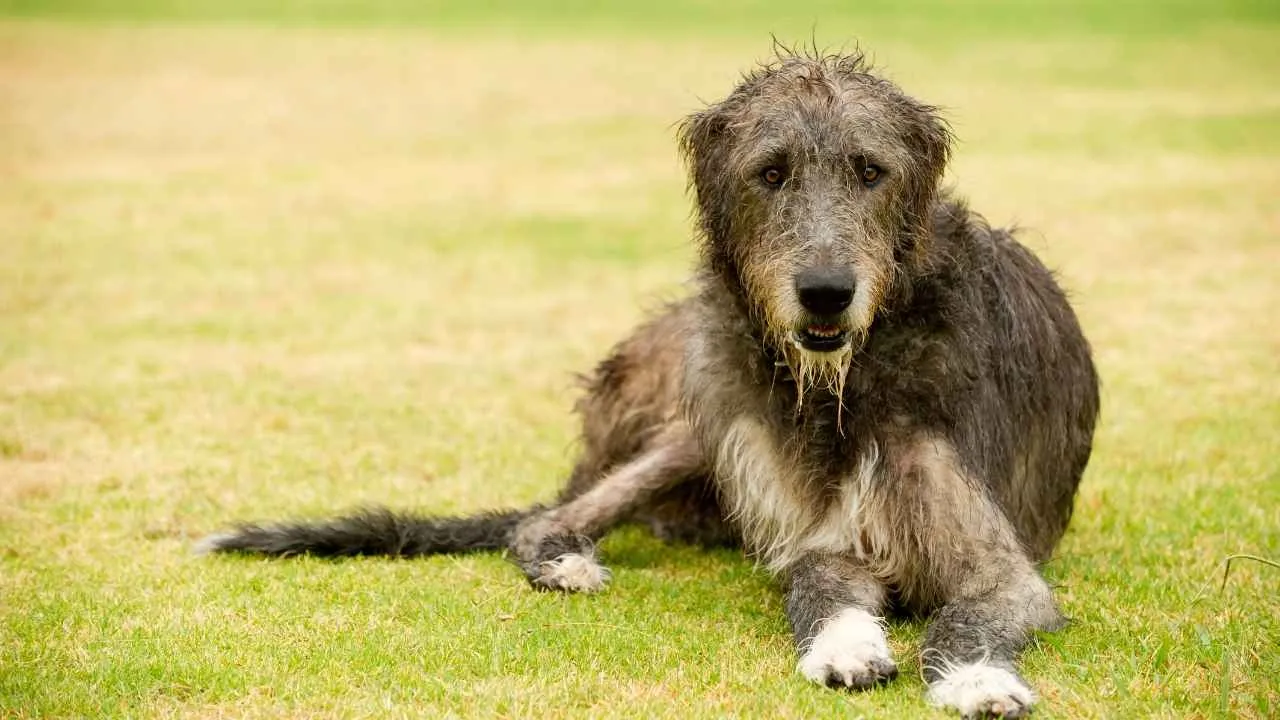
Gentle, dignified, and regal in appearance, the Irish Wolfhound is a breed that commands attention through sheer size and grace. Originally bred for hunting wolves in Ireland, this giant breed is known for its calm temperament and deep loyalty to family.
PetMD explains that the Irish Wolfhound’s background as a hunting breed gives them a strong instinct to chase prey, so a securely fenced (and tall) yard is important to prevent them from pursuing animals in the area.
Despite their imposing presence, they are remarkably affectionate and often described as “gentle giants.” Their easygoing nature makes them suitable for homes that can accommodate their massive size, both in square footage and in heart.
Exercise
This giant dog breed requires regular exercise to support its large frame, though its energy level is moderate. Daily walks are essential, along with opportunities to stretch out in a safely enclosed yard. They enjoy long strolls, hikes, and can make excellent jogging partners once fully matured.
Mental stimulation through dog sports like tracking or agility can keep them engaged. Due to their sighthound lineage, it’s important to keep them leashed outside of fenced areas to avoid prey-chasing instincts.
Fact: The Irish Wolfhound is the tallest dog breed, capable of standing up to seven feet tall on its hind legs, with a lifespan of just 6–8 years due to its immense size.
2. Great Dane
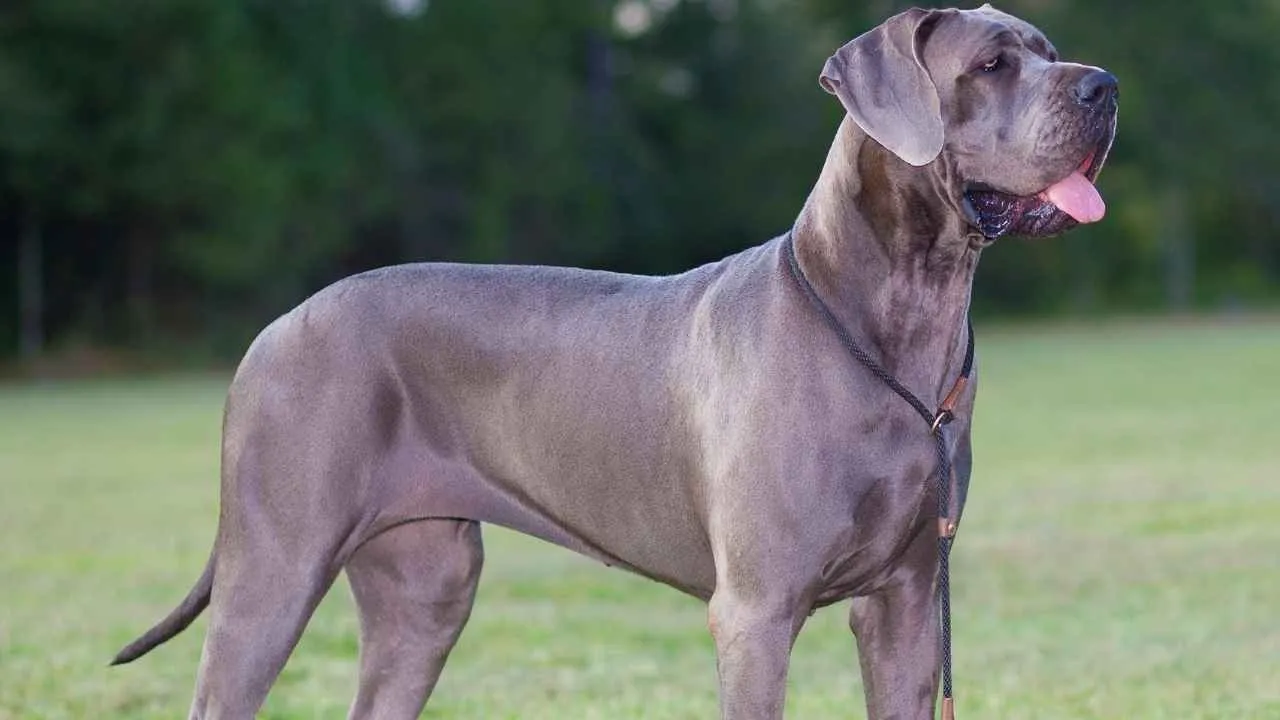
Originally bred in Germany, despite the name, this towering breed was once prized by nobility for hunting large game like wild boar. With their regal stature and deep bark, they may seem intimidating, but they are typically calm, friendly, and loyal companions.
However, their sheer size, often exceeding 100 pounds and standing over 30 inches tall, requires plenty of space and thoughtful handling, especially in homes with small children or delicate furnishings. According to PDSA, Great Danes have short coats that make grooming fairly easy.
Although they do shed, it’s usually light, so brushing once a week is typically sufficient to manage loose hair. However, during spring and autumn, they may shed more and need additional grooming.
Exercise
Although not as hyperactive as some breeds, Great Danes need consistent physical activity to stay healthy and prevent restlessness. Adults should get around two hours of exercise daily, ideally split into multiple sessions involving walks and secure off-leash play.
A spacious backyard is ideal for burning energy, while mental enrichment, like training sessions, adds valuable stimulation. For puppies, exercise should be gentle and moderate to protect growing bones and joints.
Fact: Despite their name, Great Danes are not Danish; they originated in Germany, where they were known as Deutsche Dogge and served as elite hunting dogs in royal courts.
3. Leonberger
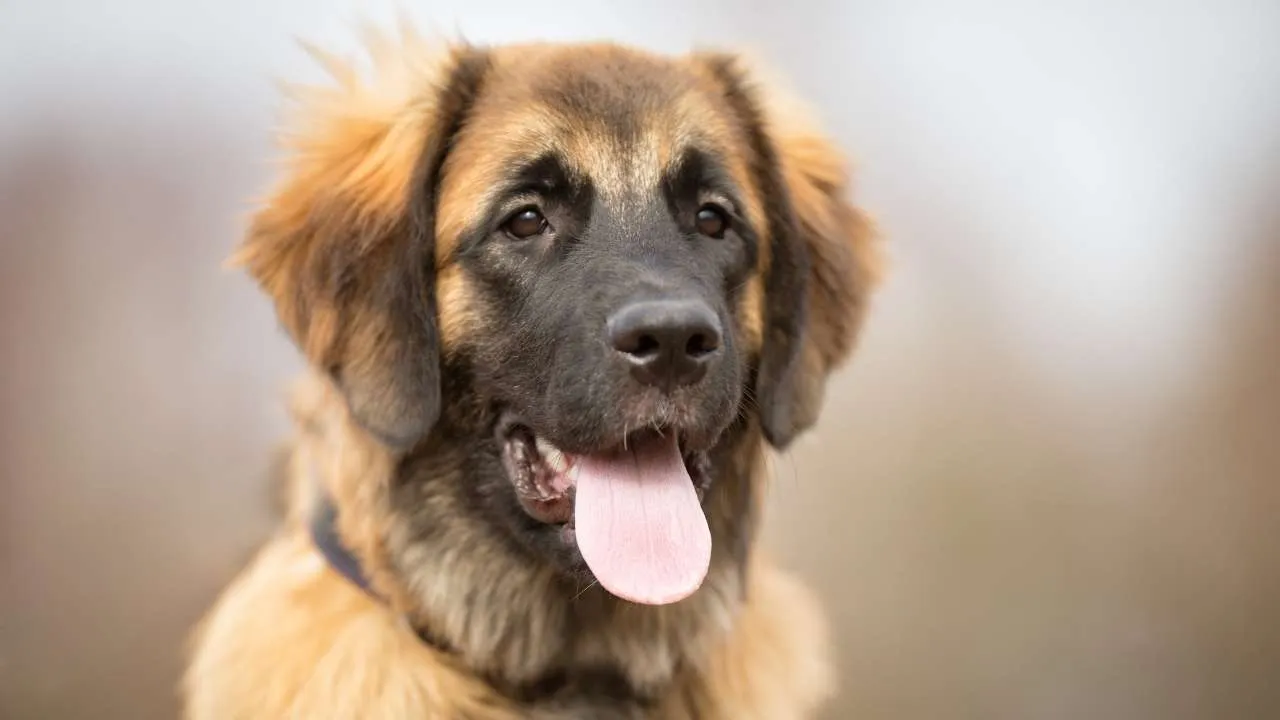
The Leonberger is an impressive, lion-like breed known for its noble bearing, affectionate nature, and incredible versatility. Purina describes the Leonberger as a powerful, robust, and well-built large breed. Originally developed in Germany, this gentle giant was bred to resemble the lion on the Leonberg town crest, combining traits from the Newfoundland, Great Pyrenees, and Saint Bernard.
With a dense, water-resistant double coat and expressive eyes, Leonbergers make devoted family companions and calm protectors. They are particularly affectionate with children and get along well with other pets, making them an ideal fit for active households seeking a loyal, even-tempered XL breed.
Exercise
Despite their calm demeanor, Leonbergers need ample daily activity to stay healthy and content. Adults require over 2 hours of exercise each day, including long walks, swimming sessions, or carting and agility activities.
While they enjoy outdoor adventures, care must be taken with puppies; avoid overexertion during early growth stages to protect developing joints. Short, soft-surface playtimes are ideal until maturity. Incorporating mental stimulation and bonding-focused play helps keep this intelligent breed well-balanced.
Fact: The Leonberger was created in 1846 in Leonberg, Germany, to resemble the lion on the town crest, blending Newfoundland, Great Pyrenees, and Saint Bernard ancestry.
4. Bernese Mountain Dog
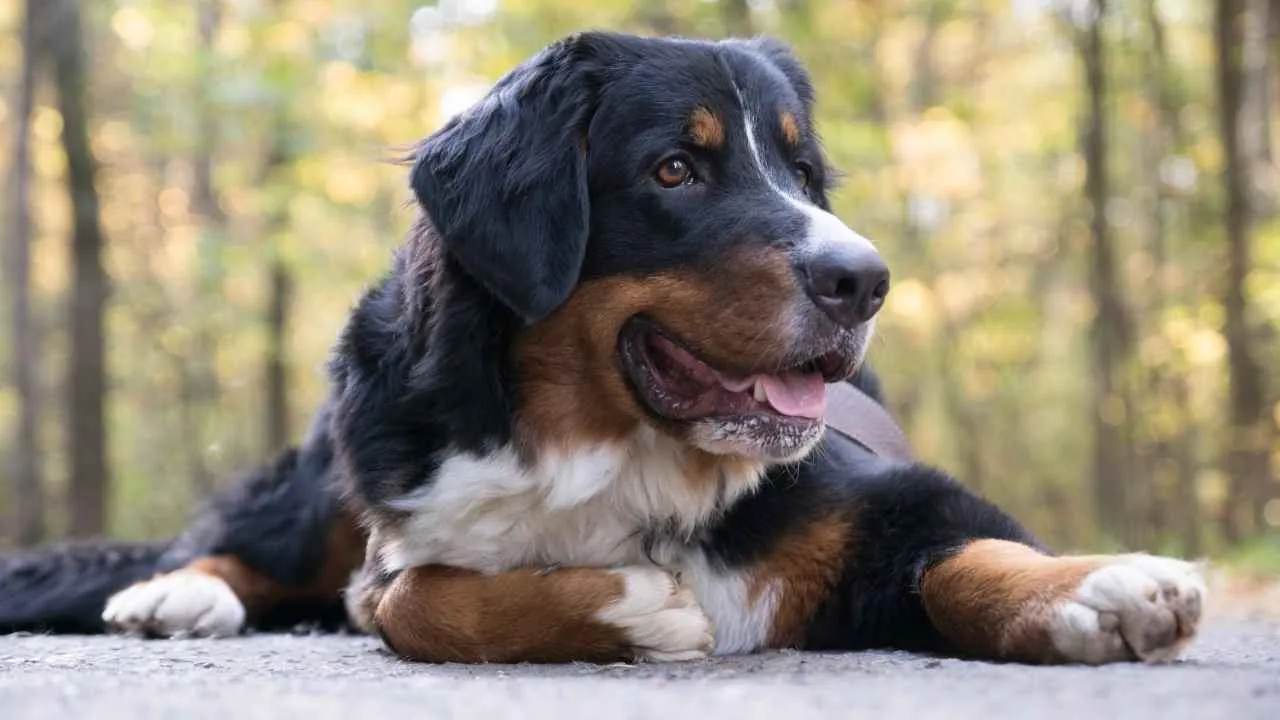
With a heritage tracing back over 2,000 years to Roman invaders in Switzerland, the Bernese Mountain Dog is a strong, loyal companion originally bred for pulling carts, driving cattle, and guarding farmland. Britannica notes that the Bernese Mountain Dog’s substantial size means it needs a spacious home and suitable transportation to avoid being confined in tight areas.
Despite their gentle disposition, Berners carry the strength and stamina of a true working breed. Their signature tri-color coat, black, rust, and white, paired with their affectionate nature, makes them an ideal family dog for active households that can accommodate their size and needs.
Exercise
Though not as hyperactive as other large breeds, Bernese Mountain Dogs still require regular, engaging activity to stay healthy and content. Daily exercise should include moderate hikes or even pulling carts or backpacks, which satisfies their instinctual work drive.
Early leash training is vital, especially since their size, ranging from 70 to 115 pounds, can be challenging to manage without it. Berners also benefit from mentally stimulating activities like obedience drills or light agility work.
Fact: Recognized by the American Kennel Club in 1937, the Bernese Mountain Dog was originally one of four Sennenhund breeds from Switzerland.
5. Newfoundland
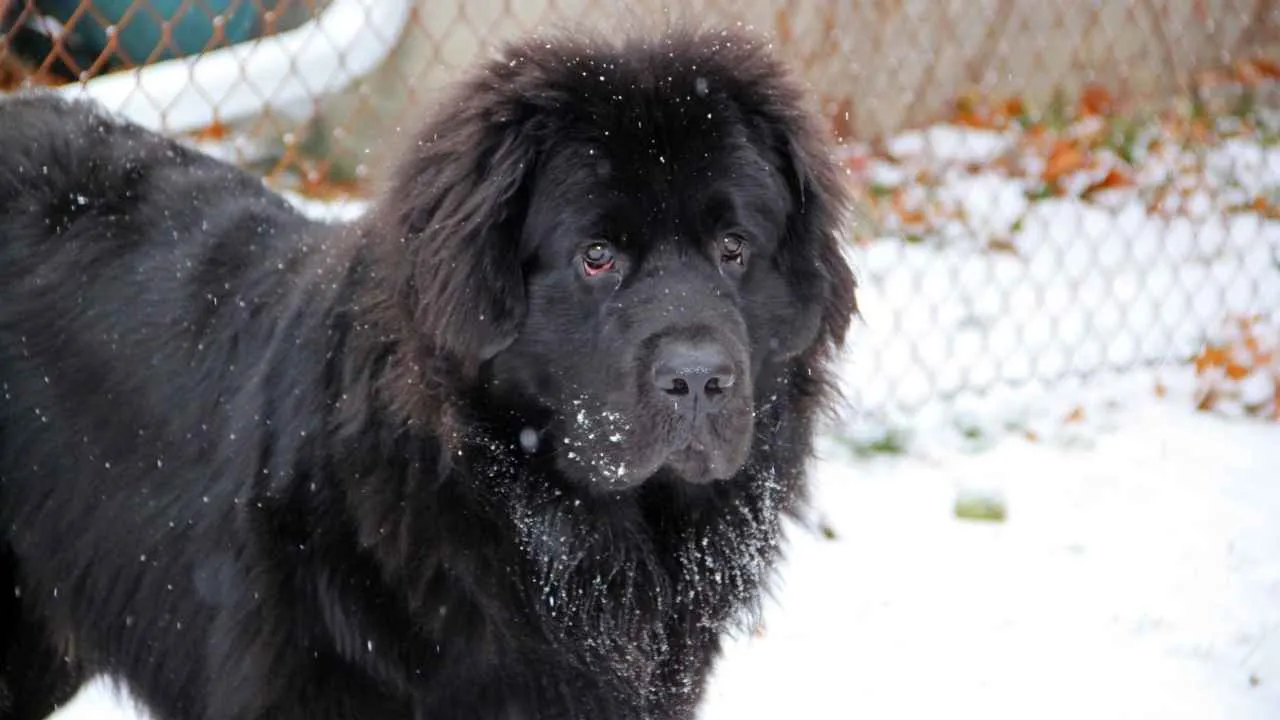
With their massive build and gentle demeanor, Newfoundlands are often affectionately referred to as “nanny dogs” for their protective and nurturing nature, especially with children. These giant dogs trace their origins to the now-extinct St. John’s water dog and were later mixed with Portuguese mastiffs, leading to the large, powerful frame they carry today.
Their heavy coats, large heads, and soulful eyes are as distinctive as their sweet, loyal temperaments. Though calm and affectionate, Newfoundlands still require proper outlets for their energy and instincts.
Exercise
Despite being on the lower end of the energy spectrum for XL breeds, Newfoundlands still benefit from regular, structured activity. They enjoy swimming, which pairs well with their webbed feet and water-resistant coat. Long walks and cart-pulling activities are ideal for adult Newfies.
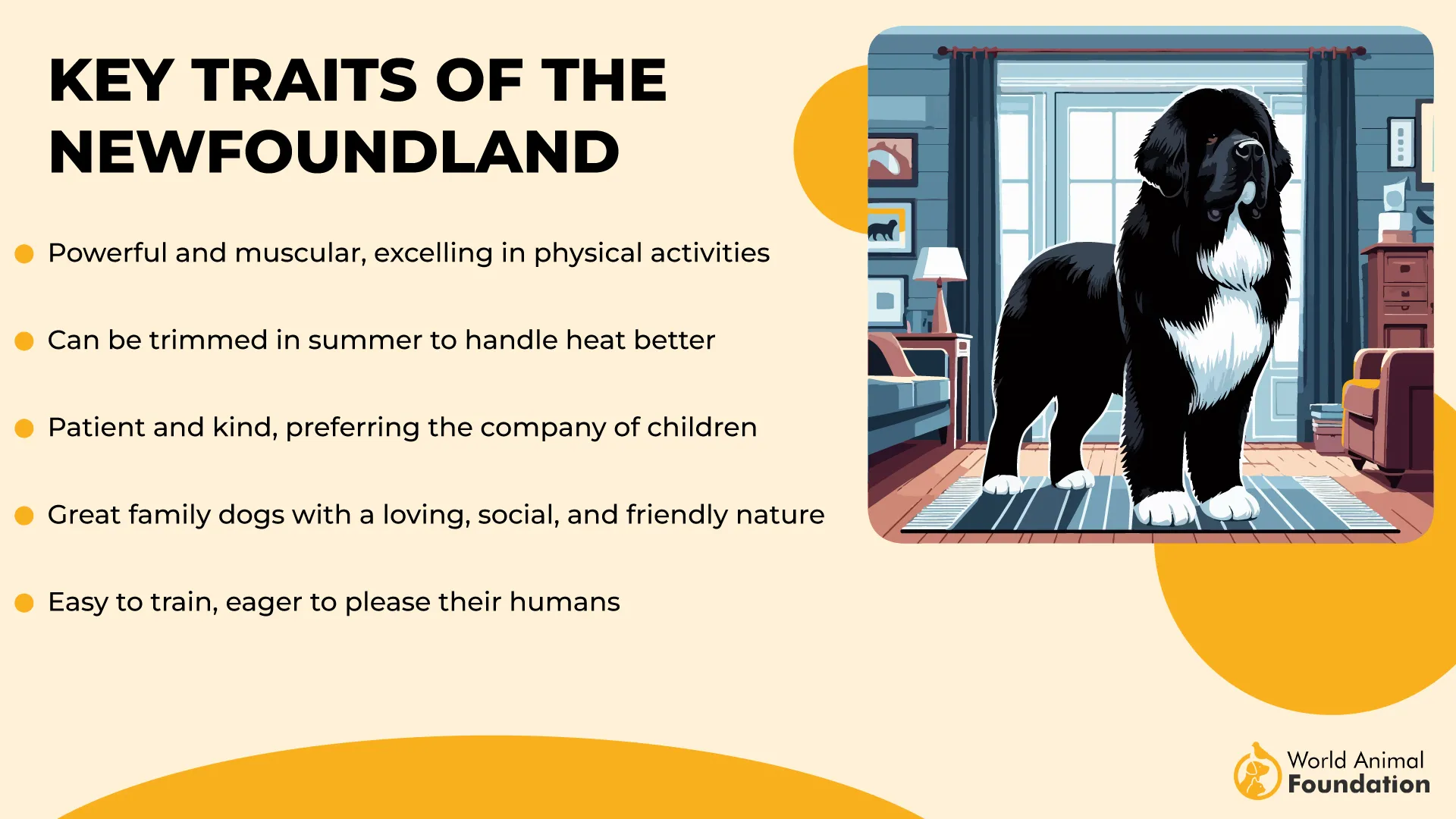
Caution is essential during puppyhood; overexertion at a young age can harm their joints. Instead, controlled, age-appropriate walks and play are best until they mature.
Fact: Senator Robert F. Kennedy’s Newfoundland, named Brumus, famously helped care for the family’s 11 children, embodying the breed’s affectionate and guardian-like nature.
6. Cane Corso
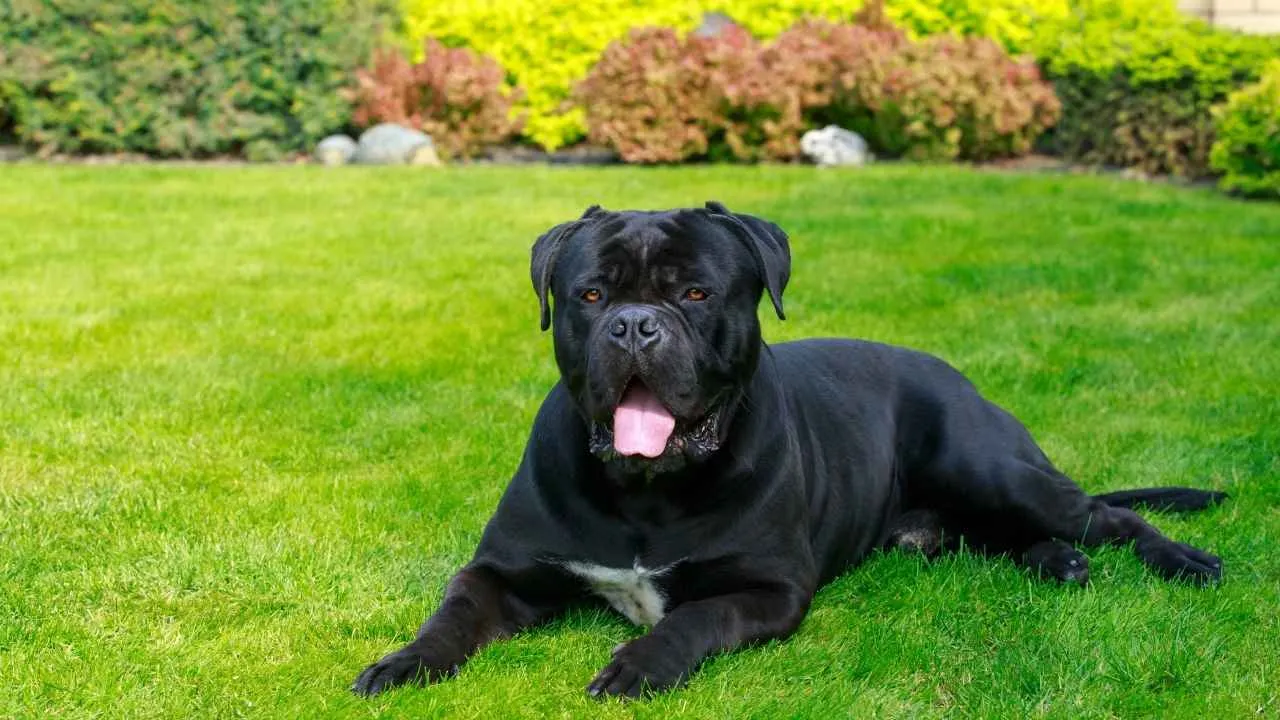
The Cane Corso is a powerful guardian breed that thrives in active households. Originally bred in Italy for guarding property and assisting with livestock, this working dog is deeply loyal and highly intelligent.
Weighing between 88 and 110 pounds and standing up to 28 inches tall, the Cane Corso commands attention with its broad chest, chiseled features, and confident posture. These dogs form strong bonds with their families and excel when given purpose and routine.
Exercise
The Cane Corso has high physical and mental energy needs. Daily brisk walks, agility drills, or advanced obedience training are essential to keep this breed happy and well-mannered. Without adequate stimulation, they may develop destructive habits such as digging or excessive barking.
A securely fenced yard provides a perfect outlet for sprints and structured play. Their love of challenges makes them ideal candidates for activities like dock diving and protection work.
Fact: The Cane Corso’s name comes from Latin and loosely translates to “guardian dog,” reflecting its ancient Roman roots as a protector and working companion.
7. Boerboel
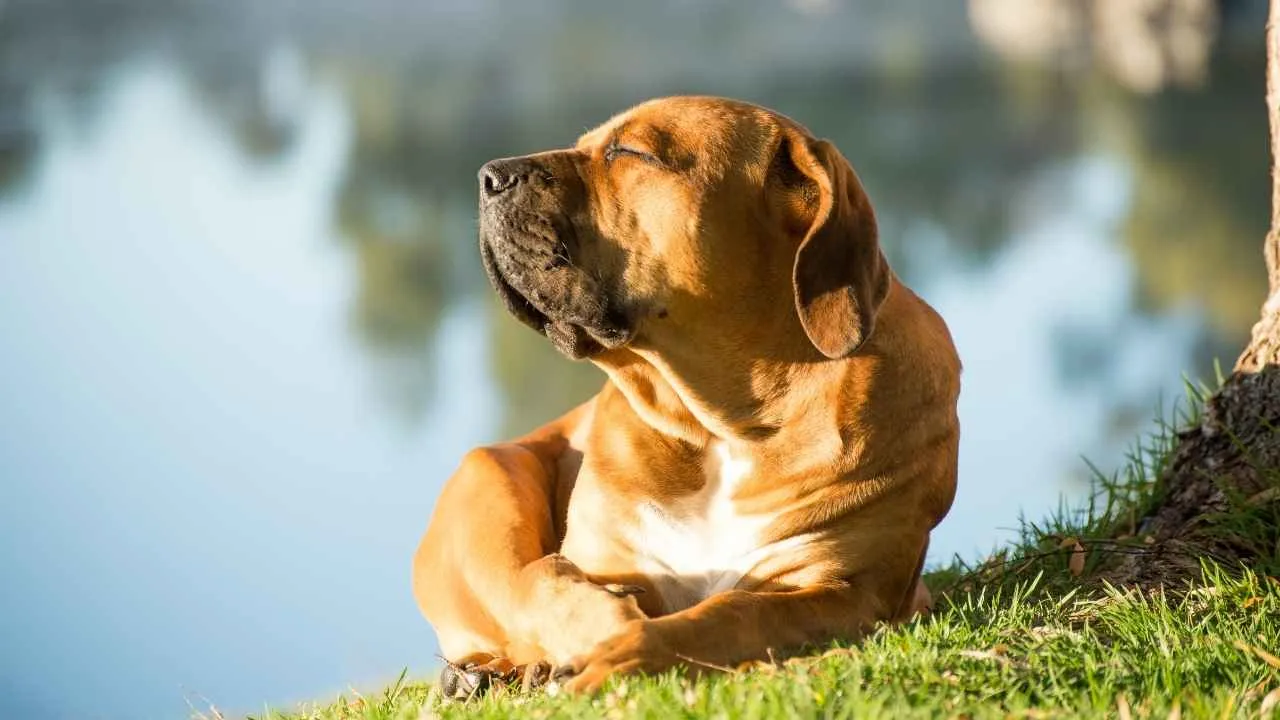
Bold and built like a fortress, the Boerboel hails from South Africa, where it was bred to protect farms from large predators. With its muscular frame, blocky head, and confident gaze, this breed embodies strength and intelligence. Though naturally protective, Boerboels are not reckless; they’re deeply loyal and capable of distinguishing threats from harmless situations.
This makes them effective guardians but also demands a responsible owner who can provide firm training and early socialization. Given their imposing size, reaching up to 27 inches in height and weighing as much as 200 pounds, Boerboels require thoughtful handling.
Exercise
These powerfully built dogs need daily physical and mental stimulation. Long walks, structured play sessions, and obedience training in a securely fenced area help channel their energy constructively.
Boerboels also thrive in dog sports such as agility, rally, or weight pulling, but should never be off-leash in open areas due to their protective nature and reactivity to other dogs. Mental challenges, such as learning new commands or working roles, are just as essential as physical exertion.
Fact: Despite their fierce appearance, these sporting dogs are affectionate with their families and can even be trained as therapy dogs, though they’re not ideal for first-time owners.
8. Tibetan Mastiff
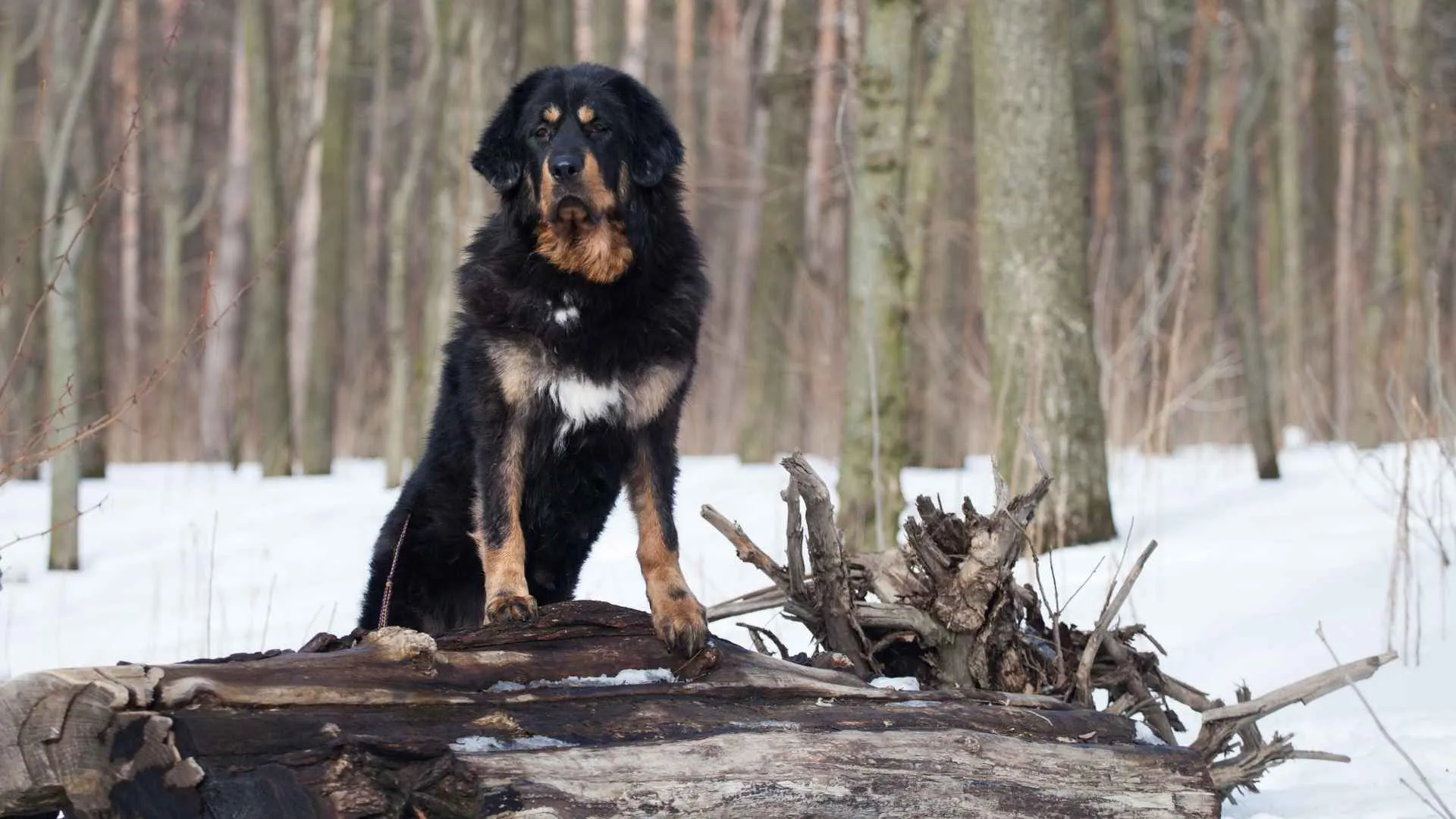
The Tibetan Mastiff is a strikingly majestic breed with ancient roots in the Himalayas. Originally developed to guard livestock and monasteries, this dog is known for its immense size, thick mane-like coat, and fiercely loyal nature.
While often reserved and independent, they form strong bonds with their families and exhibit a calm, protective demeanor in domestic settings. Their dignified and self-reliant personality makes them excellent watchdogs who act only when necessary.
Exercise
Though Tibetan Mastiffs may appear content lounging throughout the day, they require consistent daily exercise to stay healthy and stimulated. A long, brisk walk or securely fenced outdoor play is vital, especially during cooler hours, as they are more active at dawn or dusk.
These powerful dogs are agile for their size and enjoy mentally engaging activities like obstacle courses or scent games. Owners should monitor diet closely, especially for less active dogs, to avoid unwanted weight gain.
Fact: Tibetan Mastiffs can weigh between 70 and 150 pounds and are known to become more alert and active during nighttime hours, living up to their heritage as nocturnal guardians.
9. Kuvasz
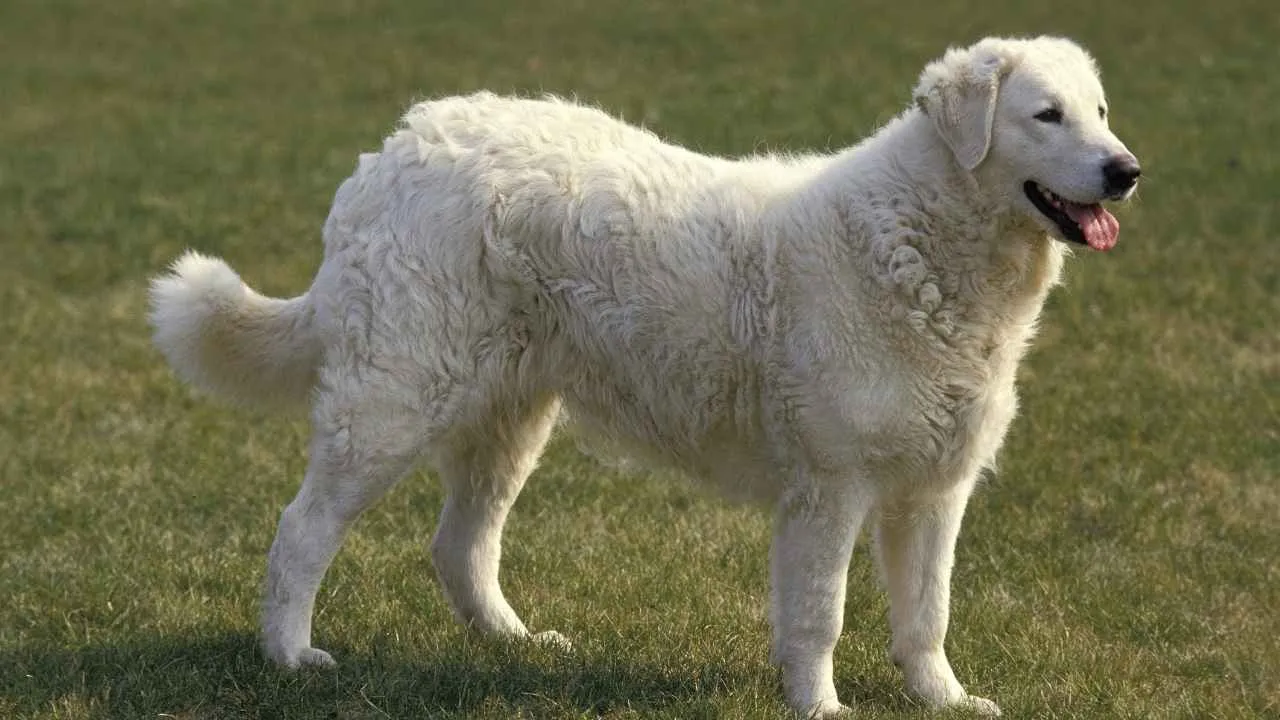
The Kuvasz is a majestic and powerful breed with roots tracing back to ancient Hungary. Once prized by European nobility as a companion and protector, this giant dog later became a trusted livestock guardian across the rural landscapes of Hungary.
Renowned for their intelligence, independence, and unwavering devotion, Kuvaszok (plural) bring both elegance and seriousness to any home prepared for their size and strength. Though calm indoors, they are inherently watchful and protective, making them ideal for experienced owners who can meet their physical and mental needs.
Exercise
Despite a seemingly low energy level, the Kuvasz requires substantial daily exercise due to its working heritage. Long walks, secure yard play, or tasks like obedience training help satisfy this breed’s need for purposeful activity.
Without proper outlets, Kuvaszok may become restless and prone to escape attempts. Early socialization and consistent routines are key. Structured, moderate exercise is especially important during puppyhood to support proper growth and prevent joint issues.
Fact: Male Kuvasz dogs can reach up to 30 inches in height and weigh between 100 to 115 pounds, originally developed to guard livestock and serve as loyal guardians.
10. Anatolian Shepherd
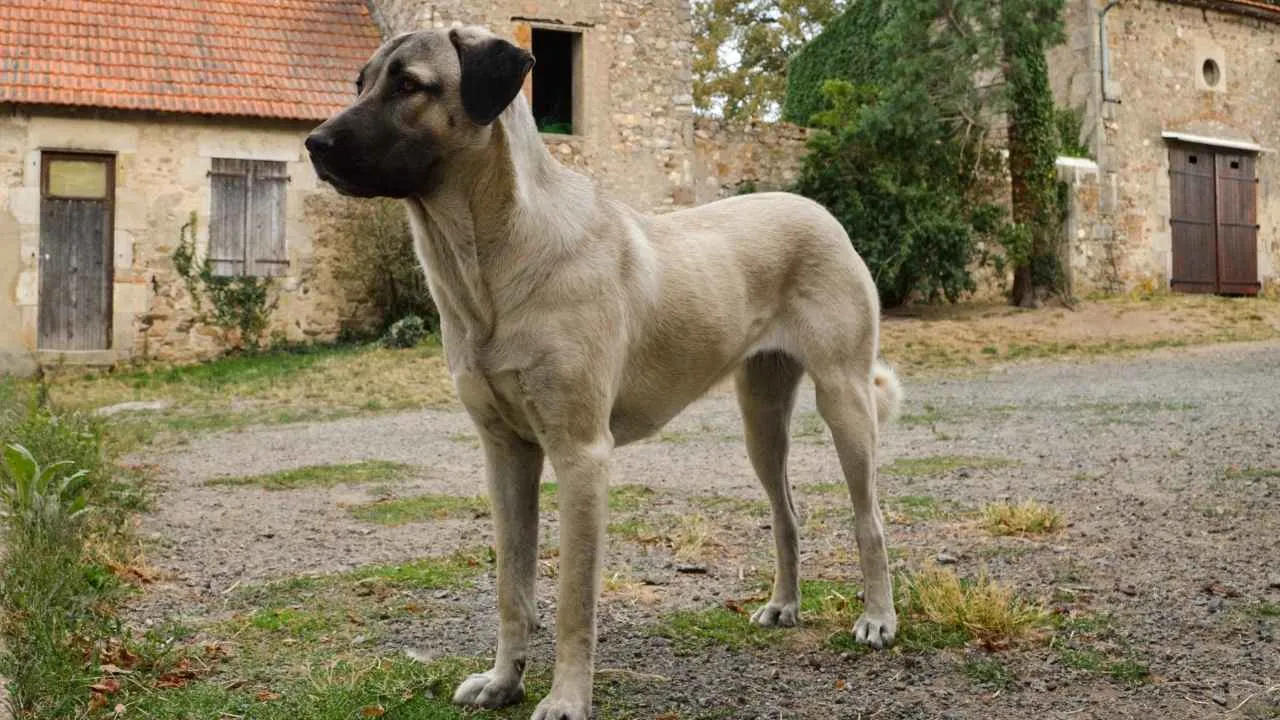
The Anatolian Shepherd is an ancient breed developed over 6,000 years ago in Turkey to guard flocks across rugged terrain. Deeply loyal to their families, this herding breed possesses an instinctive wariness of strangers and a strong protective nature.
Their self-sufficient demeanor makes them well-suited for experienced owners who understand the needs of working breeds. Though not overtly affectionate, Anatolians bond closely with those they trust and display a calm, confident presence in the home.
Exercise
Despite their stoic exterior, this large dog breed needs regular physical exercise to stay balanced. A daily routine of 1.5 to 2 hours of movement, divided between walks, light jogs, and play in a fenced yard, helps maintain their muscular frame and mental sharpness.
While not hyperactive, their endurance and work-driven temperament demand a lifestyle that allows room for both physical and mental engagement. Without adequate exercise, they can become bored and display unwanted behaviors.
Fact: Male Anatolian Shepherds can reach 29 inches in height and weigh between 110 to 150 pounds, a build rooted in their historic role as fearless livestock guardians.
Conclusion
For families and individuals ready to embrace dog ownership with an active lifestyle, extra-large dog breeds with high exercise needs can be incredibly rewarding companions. These aren’t your average couch dwellers; many of these giants, like sled dogs and sporting dogs, thrive on vigorous exercise routines that stimulate both body and mind. Compared to toy breeds like the Shih Tzu or Bichon Frise, XL dogs demand significantly more space, stamina, and daily movement. If you’re wondering how much exercise is enough, most of these dogs need at least 1.5 to 2 hours of daily activity, often including structured dog exercise sessions and mental challenges.
Breeds such as Labrador Retrievers, Border Collies, and German Shepherds, although not always classified as XL, set a strong precedent for high energy levels and athletic ability. As noted by the UK Kennel Club, understanding specific dog exercise requirements before adoption is essential for a happy, healthy companion. With consistency and commitment, these robust breeds can thrive in active homes and form deeply loyal bonds with their families.


